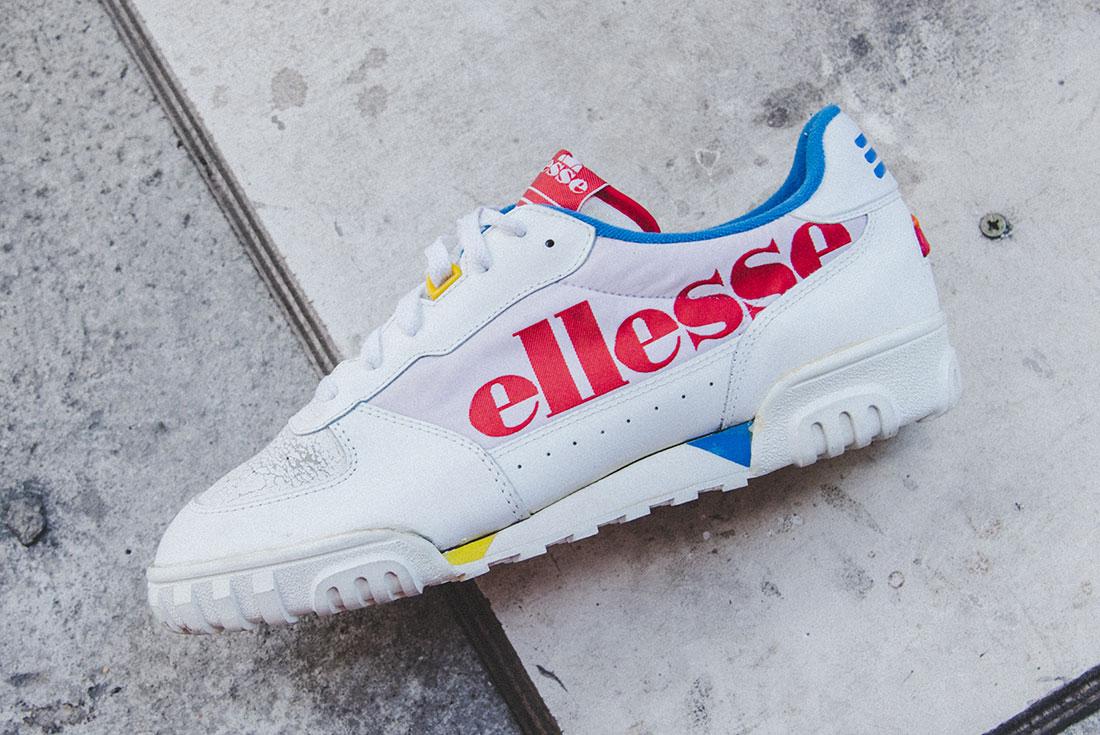ellesse Is More: The Story of the Semi-Palla
exemplifies the very essence of glamorous European sports style. From daring derriere-baring ski pants to sky-high basketball footwear, not to mention their renegade tennis takeover during the sport’s golden era, ellesse have never been shy of embracing the bold and the beautiful. Time to take a quick look back as we unlock the secret behind the semi-palla.
Semi-Palla
Born into a family of textile merchants, Leonardo Servadio seemed destined to enter the same industry from a young age. In 1959, he started a company originally named ‘L&S’ to produce immaculately tailored trousers. We’d like to think Servadio immediately celebrated with a quick nip of Cuvee Léonie before he threw his skis in the back of his Ferrari 250 GT Berlinetta and raced off to the slopes at Terminillo. Charisma and flamboyant gestures were never in short supply while Leonardo Servadio was around.
The trouser business was a triumph, but Servadio had bigger hems to trim. In 1968, the L&S name was dropped in favour of the phonetic spelling ‘ellesse’.
A few years later, a new logo was devised to symbolise the fresh direction of the company. The stylish ‘semi-palla’ red and orange lozenges represented a tennis ball framed by a pair of ski tips.

As ellesse powered through the disco era, figure-hugging ‘jet ski’ pants propelled sales growth. Designed by Servadio, the innovative features included articulated panels and swoopy lines in eye-popping colours. Huge logos were splashed across the legs, marking ellesse as a trailblazer in the ath-leisure category.
While Servadio loved skiing, he was also desperate to give tennis a rebellious facelift. Well before other brands tried to turn players into rockstars, Servadio cracked the game’s prim and proper facade wide open with his wild style approach. Grand Slam star Guillermo Vilas, along with teenage tyros Boris Becker and Pat Cash, were appointed as brand ambassadors. Chris Evert and Andrea Temesvári were other high profile members of the squad.
The American Dream
While tennis remained the imperative, ellesse also embraced the fitness craze that took America by storm in the 1980s. Backed with aspirational pin-up posters that flaunted tight buns and figure-hugging Lycra, exotically named trainers like the Sabela and Anzio penetrated the US market. For more serious athletic pursuits, performance pieces like the Prestige and Laser proved the brand was just as focused on winning as looking good. Italo-chic was booming!
In 1982, famed industrial designer Marc Sadler was enlisted to develop a range of footwear. Sadler was an esteemed furniture designer who pioneered ski boot tech at the same time Servadio was redefining ski apparel. The serendipitous union is rightly lauded as the original collaboration between a sportswear giant and an industrial designer.
The is Sadler’s most significant ellesse design. A technical marvel for the time, it arguably provided the phenotype for tennis sneakers throughout the period. The trimmed- down upper increased breathability by mixing lightweight nylon with leather panels, while the outsole was aggressively whittled down for optimal grip. Massive ‘ellesse’ branding dominated the Tanker’s flanks, cutting through the clutter to create harmony with the raised heel logo. No doubt about it, the Tanker remains an unmistakable ellesse masterpiece.
Sadler imbued his Assist basketball design with teched-out panelling and a blue, white and red graphic combo that recalled the artist Piet Mondrian. The bold scheme, and spelled-out logo, was bolstered by an even bigger tongue. The Assist was duly worshipped in skate circles when Bay Area street punks like Jim Thiebaud embraced its ankle-protecting cut and reliable traction. Like the Tanker, the Assist’s power-packed design proved influential – especially that distinct forefoot and ankle lace strap system.

Team USA
The 80s was a glorious decade for the European upstart. ellesse backed Ferrari in Formula 1, the Italian football team were crowned world champions, and alpine ski racer Marc Girardelli became a five-time World Cup winner. To further enhance their budding American courtship, ellesse also bankrolled the New York Marathon, kitting out 14,000 volunteers in branded gear along the 26-mile route through Manhattan. The heavy presence must have inspired Gianni Poli, who crossed the line first in 1986 while decked out head-to-toe in ellesse.
Everyone wanted a slice of semi-palla pie. In 1987, Reebok bought ellesse’s American trademark and acquired more than just the name. A pair of experimental ski boots with a rudimentary inflatable bladder system piqued the interest of the Reebok Advanced Concepts team. That prototype was eventually refined to become the foundation of the industry-defining Reebok Pump technology in 1989.
Casual Cool
Servadio wanted ellesse to look stylish and chic in every situation. While Europeans happily sported tennis polos post-match, their American counterparts embraced the look as smart-casual attire. Imported Italian tracksuits with steep prices were considered luxury items, bending strict dress codes at fancy restaurants and country clubs. The cult of matching tracksuits with sneakers was redefining the idea of a three-piece suit.
When ellesse appeared on American TV in the 90s repped by braggadocios the Fresh Prince of Bel-Air and DJ Jazzy Jeff, millions of teen eyes devoured the semi-palla. Today, that distinctive look remains a significant reference for 90s-era Euro steez, and an inspiration point for the big logo tee that has become so ubiquitous in recent times.
2020 Vision
As ellesse is revitalised for another tilt at the championship in 2020, the return of the Tanker was marked with a lavish ellesse in London. The recent colab with London-based designer Liam Hodges, along with monochromatic co-branded range of ellesse après-ski-wear, has given the classic Italian brand contemporary connections.
